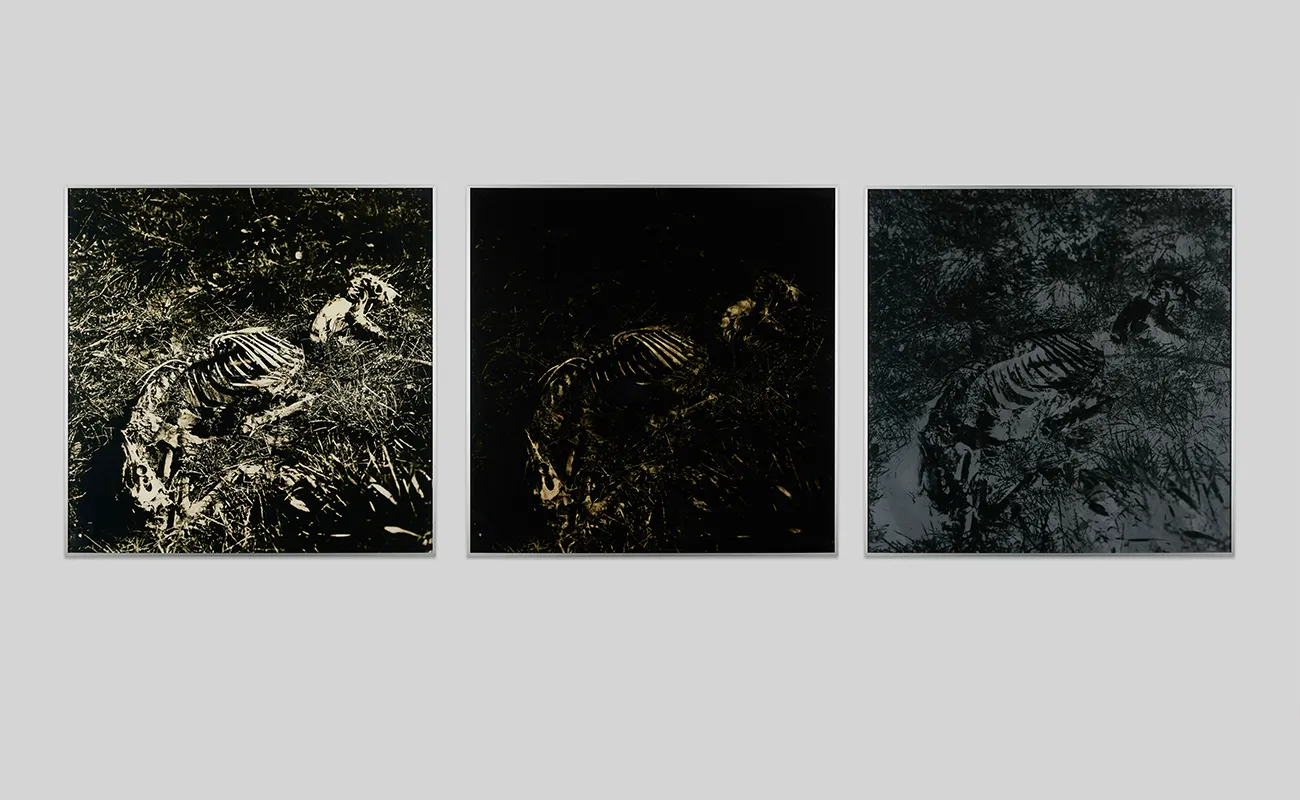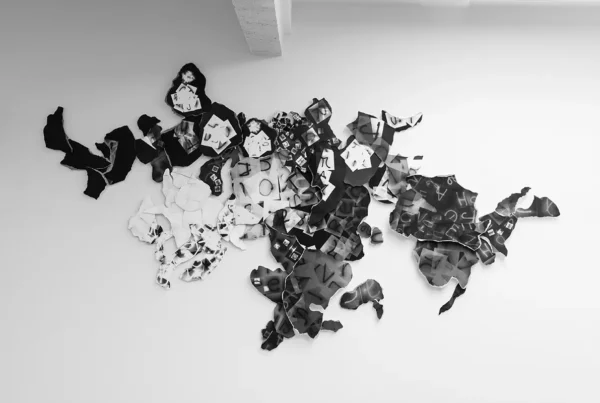“True creativity lies in the delicate balance between control and surrender, between the seen and the unseen.”

Hiromichi Matsudaira: The Intersection of Zen and Postmodern Artistry
Hiromichi Matsudaira, a Japanese visual artist originally from Tokyo, has carved out a unique place for himself in the contemporary art scene, fusing the philosophical depth of existentialism and Zen with the intellectual rigor of postmodern thought. Currently based in Berlin, Matsudaira’s artistic journey spans several cosmopolitan cities including London, San Francisco, Paris, Stockholm, and Amsterdam. These international experiences have infused his work with a global perspective, blending tradition and modernity in a deeply reflective manner. His art, while rooted in the analog world, transcends the physical act of creation, engaging with the metaphysical questions that shape human existence.
His practice is firmly grounded in the analog photographic medium, which Matsudaira treats with a meditative and contemplative approach. For him, photography is not merely about capturing moments; it becomes an introspective ritual that merges craft with philosophy. The darkroom, where his photographs come to life, serves as more than just a technical space. It is a place of transformation where metaphysical inquiry meets aesthetic creation. The controlled environment of the darkroom allows him to explore the interplay of light and shadow, revealing a painterly quality in his work that engages viewers on multiple sensory levels. Here, Matsudaira delves into the infinite variations of imagery, pushing the boundaries of what photography can convey.
Each of Matsudaira’s works reflects his dedication to an analog process that defies the convenience of digital tools. His rejection of computerized algorithms speaks to a deeper philosophical commitment to the authenticity of the creative process. The unpredictability and spontaneity of the darkroom, where images emerge from the interplay of intention and accident, offer a rich metaphor for his artistic vision. This emphasis on craft over convenience highlights the artist’s belief in the transformative potential of creation, where the journey of making is as important as the final image. In every photograph, Matsudaira invites viewers to experience the philosophical dimensions of his work, where the boundaries between form, light, and meaning are continually questioned.

Hiromichi Matsudaira: Philosophical Underpinnings of Art
Rather than drawing inspiration from traditional visual artists, Matsudaira looks to contemporary philosophers to guide his artistic practice. Thinkers such as Jacques Derrida, Roland Barthes, Maurice Blanchot, and James Joyce profoundly influence his worldview. Their works, deeply engaged with the deconstruction of language, identity, and meaning, resonate with Matsudaira’s own explorations of perception and reality. Through the lens of these thinkers, he interrogates the structures that shape human experience, using his art as a tool to question and reinterpret familiar notions of existence.
Matsudaira’s work is heavily influenced by Derrida’s concept of différance, which examines the idea of deferral in meaning and challenges the traditional binary of original and copy. This philosophical framework is a guiding force in his art, particularly in his series Cryptomnesia. By drawing on these intellectual traditions, Matsudaira elevates his practice from mere visual representation to an exploration of the invisible forces that shape how we perceive the world. His engagement with these thinkers allows him to create art that is both intellectually challenging and visually captivating, encouraging his audience to look beyond the surface of his images to explore deeper existential questions.
This philosophical inquiry is particularly evident in how Matsudaira approaches identity and the impermanence of existence. His works invite viewers to embrace ambiguity and engage with the subtle nuances that exist between what is seen and what is hidden. The philosophical discourse embedded in his photography goes beyond mere aesthetic experience, pushing the audience to reconsider their understanding of reality. Matsudaira’s art, much like the work of his intellectual influences, remains rooted in the belief that meaning is always in flux, continuously deferred, and never entirely graspable.

The Alchemy of Creation: The Darkroom as Sanctuary
For Matsudaira, the darkroom is more than a workspace; it is a place where the mysteries of existence are interrogated and expressed. Here, his creative process unfolds in a deliberate, almost meditative fashion, allowing him to focus on the fine details that define his work. In this analog space, the unpredictability of the photographic process becomes a metaphor for life’s impermanence. The physical manipulation of film and light during development allows Matsudaira to achieve a visual language that is both painterly and abstract, infusing his images with a sense of temporal transience.
The darkroom’s alchemical qualities are central to Matsudaira’s art. Every print is the result of an intricate dance between control and surrender, a theme that reflects his broader artistic philosophy. The use of analog techniques in an era dominated by digital reproduction is a conscious decision that speaks to his belief in the importance of craft. The uncertainty inherent in working with film—the delay between capturing an image and seeing its final manifestation—echoes the philosophical ideas that drive his work. In this controlled, almost sacred space, Matsudaira discovers unexpected connections between form and content, allowing the photograph to emerge as something greater than the sum of its parts.
This approach gives his work a timeless quality, where each piece feels like a reflection on both the past and the future. Matsudaira’s commitment to the darkroom as a place of discovery emphasizes the importance of the process itself, rather than just the end result. His meticulous attention to detail within this environment highlights the delicate balance between intention and happenstance, revealing the beauty in both mastery and imperfection. The darkroom is thus not only where Matsudaira creates his art but also where he refines his artistic vision, continually pushing the boundaries of what analog photography can achieve.

Hiromichi Matsudaira: Cryptomnesia and the Exploration of Impermanence
One of Matsudaira’s most pivotal works is his Cryptomnesia series, which stands as a profound exploration of temporality and impermanence. Drawing on postmodern theories, the series delves into the idea of différance—the delay between the moment of capturing an image and its manifestation in print. This series marks a significant point in Matsudaira’s career, encapsulating the philosophical foundations of his artistic practice. Each image in Cryptomnesia is unique, reflecting the fleeting nature of existence and the continual deferral of meaning, two themes that are central to Matsudaira’s work.
The process of creation in Cryptomnesia mirrors the unpredictability of life itself. By embracing the temporal delay and the unpredictable outcomes of the analog process, Matsudaira reveals the beauty inherent in transitory moments. The images, steeped in both presence and absence, become visual representations of the impermanence that defines human existence. The series invites viewers to confront their own notions of permanence, challenging them to see the world as a constant state of becoming rather than something fixed and knowable.
Matsudaira’s exploration of impermanence in Cryptomnesia reflects his broader philosophical inquiry into the nature of existence. The delicate balance between control and surrender, which defines the creation of each image, serves as a metaphor for the human condition. In his work, the distinction between original and copy becomes blurred, evoking questions about the nature of reality and the fragility of meaning. Through Cryptomnesia, Matsudaira offers a contemplative space for viewers to engage with the transient nature of life, encouraging them to find beauty in the ephemeral and the unresolved.






